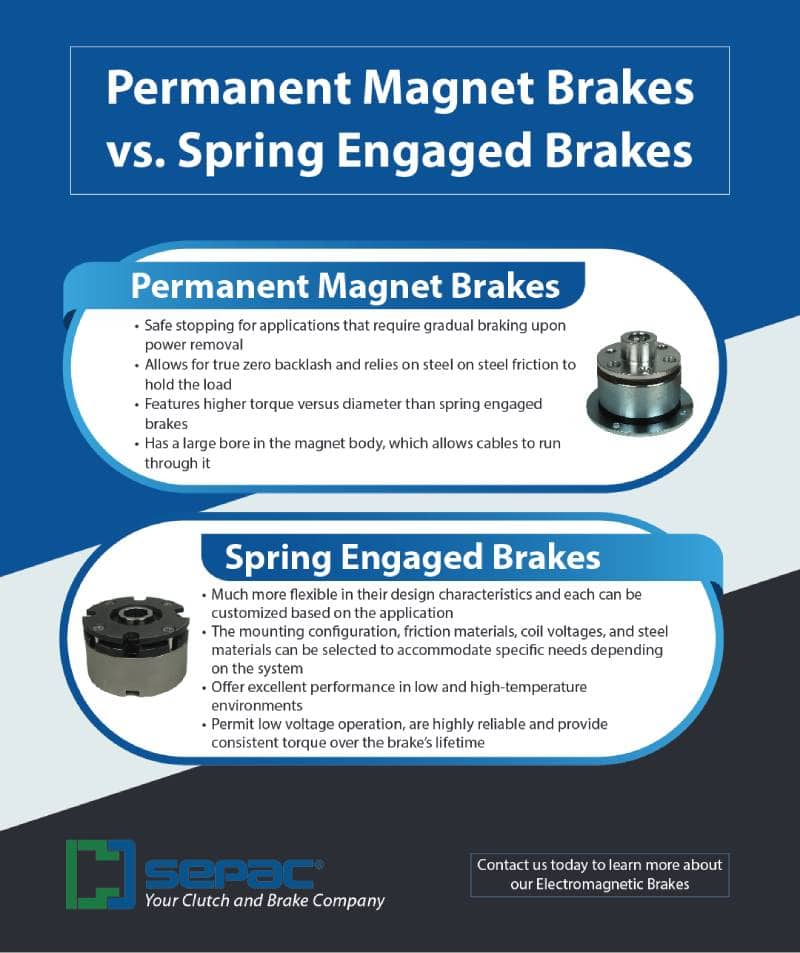Permanent magnet brakes (PMB) and spring engaged brakes (SEB) are safe and efficient braking mechanisms for halting and holding a load in place. They work in the absence of power and have distinct features that make them ideal for a range of applications.
When selecting the ideal brake solution for an application, it is vital to understand the differences between PMB and SEB systems. We will help you determine the appropriate brake for your application by providing an overview of each brake type.
Permanent Magnet Brakes
Permanent magnet brakes stop and hold a load upon power removal, providing a safe and effective braking system. The magnet body is fixed, preventing it from rotating, while the friction disc assembly is secured to the shaft. When the PMB is de-energized, the rotating and fixed components engage, stopping and holding the load in place. The brake continuously halts the load until energy returns to the system and the rotating components disengage. The use of permanent magnets within the PMB creates a normal magnetic force that attracts the armature and produces torque.
PMBs provide safe stopping for applications that require gradual braking upon power removal, like escalators and medical equipment. The PMB allows for true zero backlash and relies on steel on steel friction to hold the load. This type of brake also features higher torque versus diameter than spring engaged brakes and has a large bore in the magnet body, which allows cables to run through it. Permanent magnet brakes are set to a band of voltage, releasing the brake at +/-10% voltage.
Spring Engaged Brakes
Spring engaged brakes stop and hold a load safely and efficiently upon power removal. The fixed magnet body does not rotate, and the friction disc assembly secures the shaft either directly or via a hub. The fixed and rotating components engage upon power removal and halt the load indefinitely. As the coil is re-energized, the rotating components are disengaged, allowing the shaft to rotate freely.
Compared to PMBs, SEBs are much more flexible in their design characteristics and each can be customized based on the application. The mounting configuration, friction materials, coil voltages, and steel materials can be selected to accommodate specific needs depending on the system.
SEBs offer excellent performance in low and high-temperature environments, and they can be designed to withstand vibration, shock, humidity, and other environmental conditions. They are suitable for outdoor applications and aerospace applications that require reliable braking in a vacuum. SEBs permit low voltage operation, provide consistent torque over the brake’s lifetime, and when selected properly have very high reliability.
Permanent Magnet and Spring Engaged Brakes From SEPAC
Permanent magnet and spring engaged brakes offer power off braking performance in a range of applications. Although each type of brake is similar in function, they boast important differences in terms of capabilities and operation. At SEPAC, we offer a wide range of standard and custom braking solutions to fit your needs, including permanent magnet brakes and spring engaged brakes.
To learn more about our product offerings, or to get started on your custom braking solution, request more information today.

